Best tripods 2022: 10 great bases to help you get sharper shots
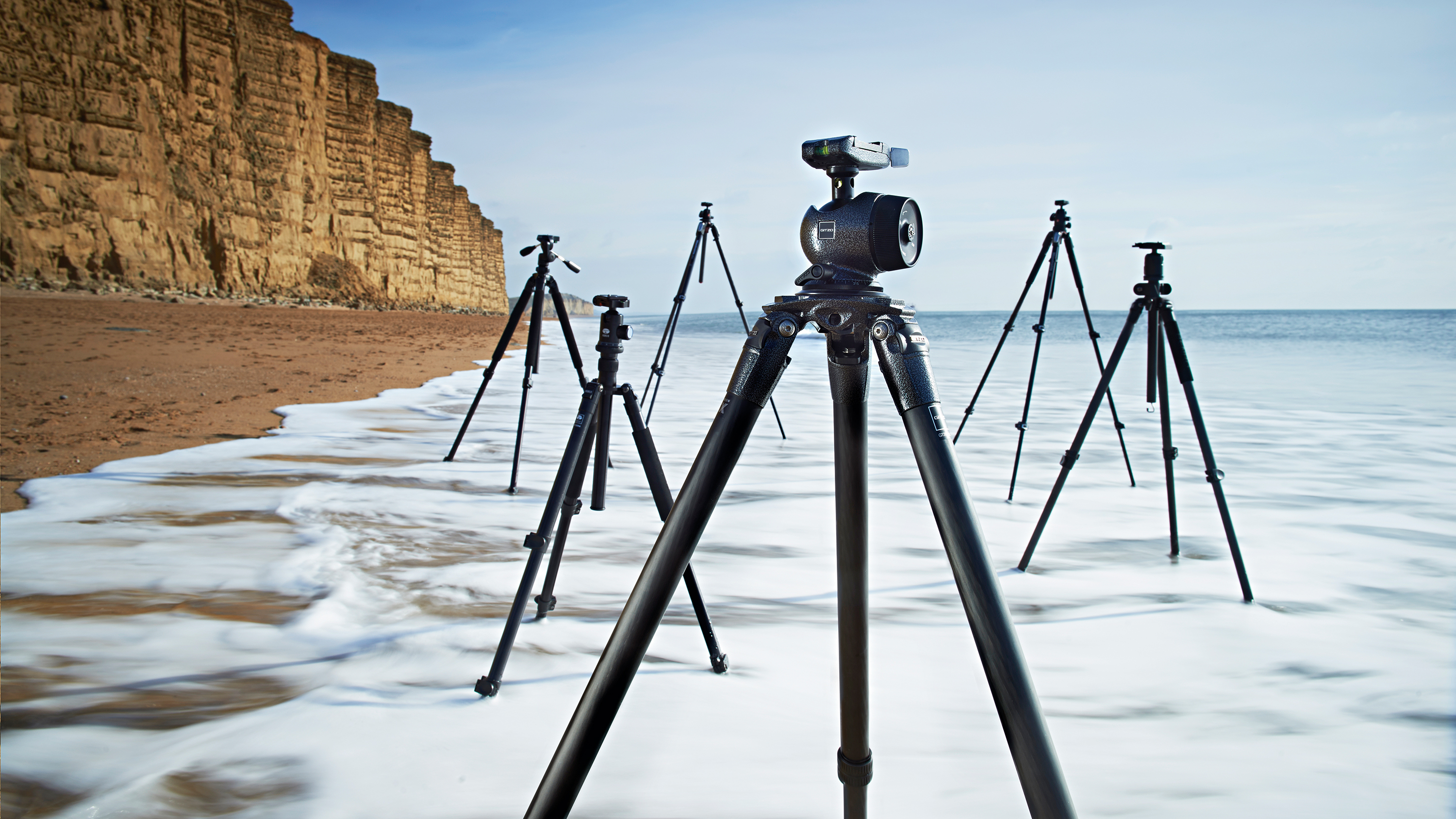
Are you wondering what's the best tripod you can buy right now? While there's no straightforward answer to that question, all tripods are a compromise of size, weight, and budget. We've rounded up all of the best options based on our extensive experience with a wide range of different types to suit those just starting off in the photographic journey, to the seasoned professional looking for a stable tripod to capture their next masterpiece.
Choosing the best tripod depends a little on your experience and how much you have to spend, but the basics are similar for most photographers. Ideally, you want something that’s small and lightweight enough for you to carry around easily. But you also want it to be tall enough for full-height shooting, and sturdy enough to give solid, wobble-free support for your camera.
We have some more detailed advice on what to look for at the end of this guide, but here are the three main things to bear in mind when choosing a tripod.
How to choose a tripod
Why you can trust TechRadar
Aluminum or carbon fibre?
Beginners will largely be fine with an aluminum tripod, which will give you solid support without weighing you down too much. But, trade up to carbon fibre, and you can expect a reduction in carrying the weight of around 20-25 percent.
Carbon fibre also tends to be slightly better at absorbing unwanted vibrations and isn’t so cold to the touch when the temperature drops. The only drawbacks are that if your tripod takes a hefty knock, carbon fibre is prone to shattering, and it’s relatively expensive to manufacture., so if it shatters or cracks, I'm afraid it's kaput.
Indeed, make-for-make and size-for-size, carbon tripods can be as much as twice the price of aluminum models.
Talking heads
Up on top, the main choice for stills photography is between a ball head and a three-way head. Ball heads are quicker and far easier to set up, and are more streamlined for stowing away while hiking.
Many recent designs are very sophisticated, with an adjustable friction damper to suit a wide range of camera and lens weights, along with an independent pan-only release. Three-way heads are relatively cumbersome, but enable more precise, individual adjustments in each of the three planes of movement independently.
A leg up
To help them stand tall, but fold down small, some tripods have four or five telescopic sections in each leg, rather than the more traditional three. Another crafty trick adopted by some modern tripods is that the legs swing completely upwards for stowage, with the feet encircling the head. This typically cuts about 20cm off the folded height.
Low-level shooting might also be required, so most modern tripods feature legs that can be locked at multiple angles. The center column can often be removed and inverted for ultra-low level shooting, while some tripods come with a low-angle adapter that replaces the center column.
To add yet more versatility, an increasing number of tripods feature a removable leg. This can be unscrewed from the spider and attached to the removable center column, to serve as a monopod.
Best tripods 2022:
The type of tripod you pick will depend on your specific needs, from a simple table-top option you can sling in your bag to large, heavy-duty supports. We've picked out the 8 best options to suit a range of budgets and needs.

1. Gitzo GK1542 Mountaineer Series 1 (4 sections)
Specifications
Reasons to buy
Reasons to avoid
No, it's not the cheapest tripod in this round-up by far, but buy Gitzo's Series 1 model and you'll likely never need to buy a tripod again. Owned by the Vinten Group (who also own Manfrotto), Gitzo is synonymous with ultimate performance and durability when it comes to tripods, and the Mountaineer Series 1 is no exception. An insane payload for its size (14kg max) and huge 171cm maximum height seems almost unreal when compared with its 1.78kg weight and 26cm folded height.
The beautiful, classic design makes this tripod look like it should be part of a photo shoot for the next James Bond film. The dappled metal is excellently finished and users will find it hard to tarnish in all but the most extreme scenarios.
The Carbon eXact tubing is lightweight but stiffer and bigger than most to ensure maximum sturdiness. Its ball head is slimmed down compared to previous generations and that makes it much easier to pack away in a camera bag or when traveling in planes. The ball head itself is incredibly smooth, making panning shots a breeze. It also locks in firmly with no budge when tightened sufficiently which is reassuring when loading up expensive telephoto lenses.

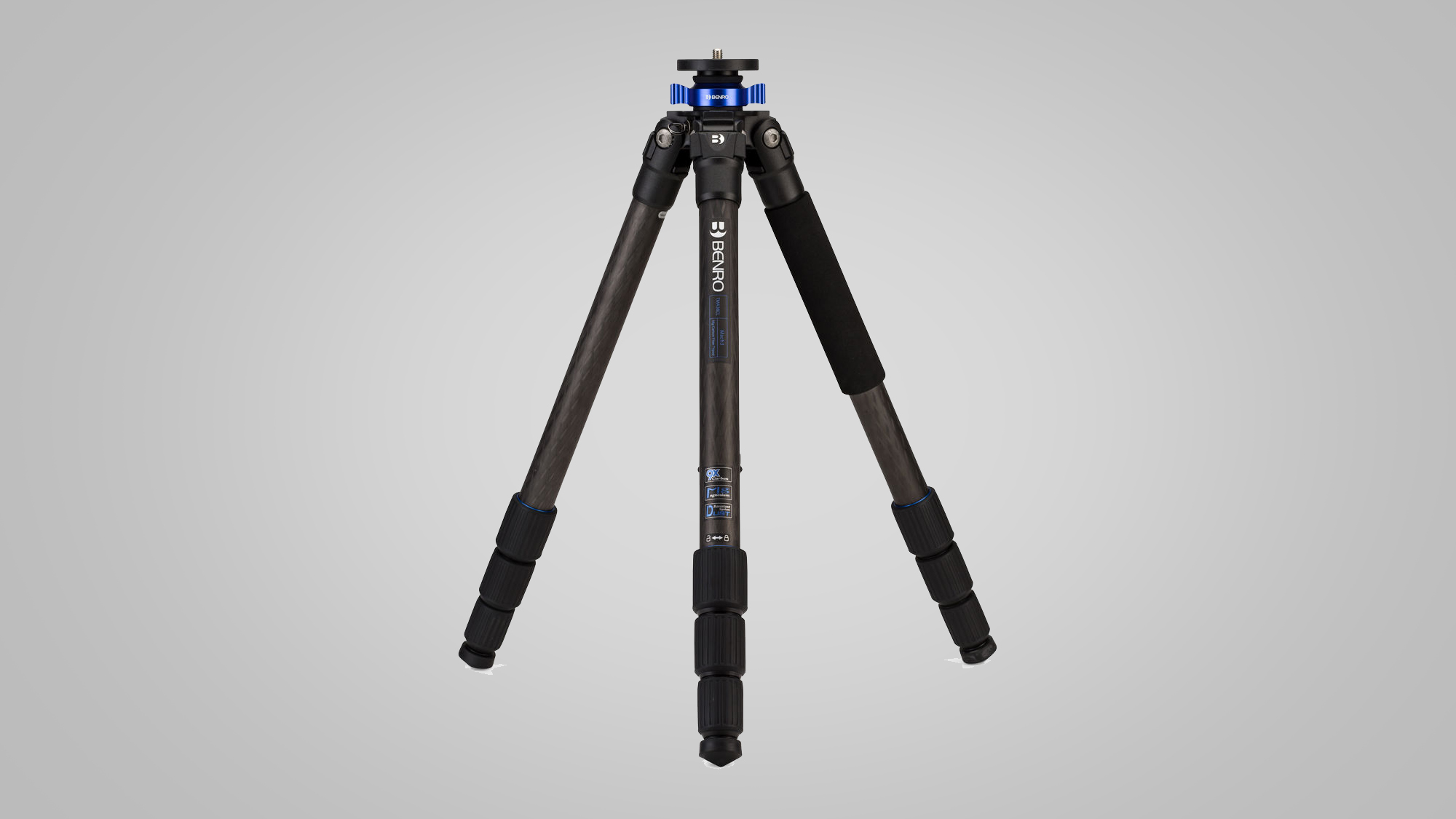
2. Benro TMA38CL Mach3 + B3 ball head
Specifications
Reasons to buy
Reasons to avoid
Sold separately as TMA38CL carbon fiber legs and a B3 ball head, this tripod isn’t available as a complete kit, but at least you can mix and match the components of your choice rather than compromise. An entirely traditional tripod, the Benro doesn’t have fancy features like a center column that can act as a horizontal boom or a removable leg for monopod duty. On the plus side, it’s very quick and easy to set up and pack away. Indeed, it’s supplied complete with a high-quality padded carrying case, a low-angle adapter, and swappable rubber pads and metal spikes for the feet.
Four-section legs enable a fairly modest folded height of 69cm, complete with the B3 ball head. The head is a perfect match for the legs and includes an adjustable friction damper and pan-only release. At full stretch, the maximum operating height is a towering 187cm, despite the carbon fibre centre column being fairly short. Even at its maximum extension, the tripod remains incredibly rigid and resistant to vibration, the 9-layer carbon fibre, and magnesium alloy castings really earning their keep. It's this build quality and solidity that makes it our current favorite tripod, and the B3 ball head is its ideal partner.


3. Benro GoPlus Travel FGP18A + B0 ball head
Specifications
Reasons to buy
Reasons to avoid
Beautifully crafted from aluminum and magnesium, the Benro GoPlus Travel FGP18A is a seriously good set of legs. A carbon fiber version is also available, but it’s more than twice the price and doesn’t add to the performance. The metal edition is the better buy, and it’s not particularly heavy at 1.95kg, including the B0 ball head (sold separately).
Despite being billed as a travel tripod, the Benro has a respectable if not overly generous maximum operating height. It also has a hefty load capacity and is extremely rigid. Following the latest trend, the legs swing upwards around the head to enable a small carrying height of just 46cm.
Clever tricks include a pivoting center column that can be locked at angles in small increments through a full 180-degree arc and three lockable leg angles. Bubble levels are featured on both the legs and the head, while the head itself has independent locking, panning, and friction knobs.
The kit includes interchangeable screw-in spikes and rubber feet, and everything’s wrapped up in a smart padded soft case. And to save traveling with the extra kit, one of the legs can be unscrewed and used as a monopod.

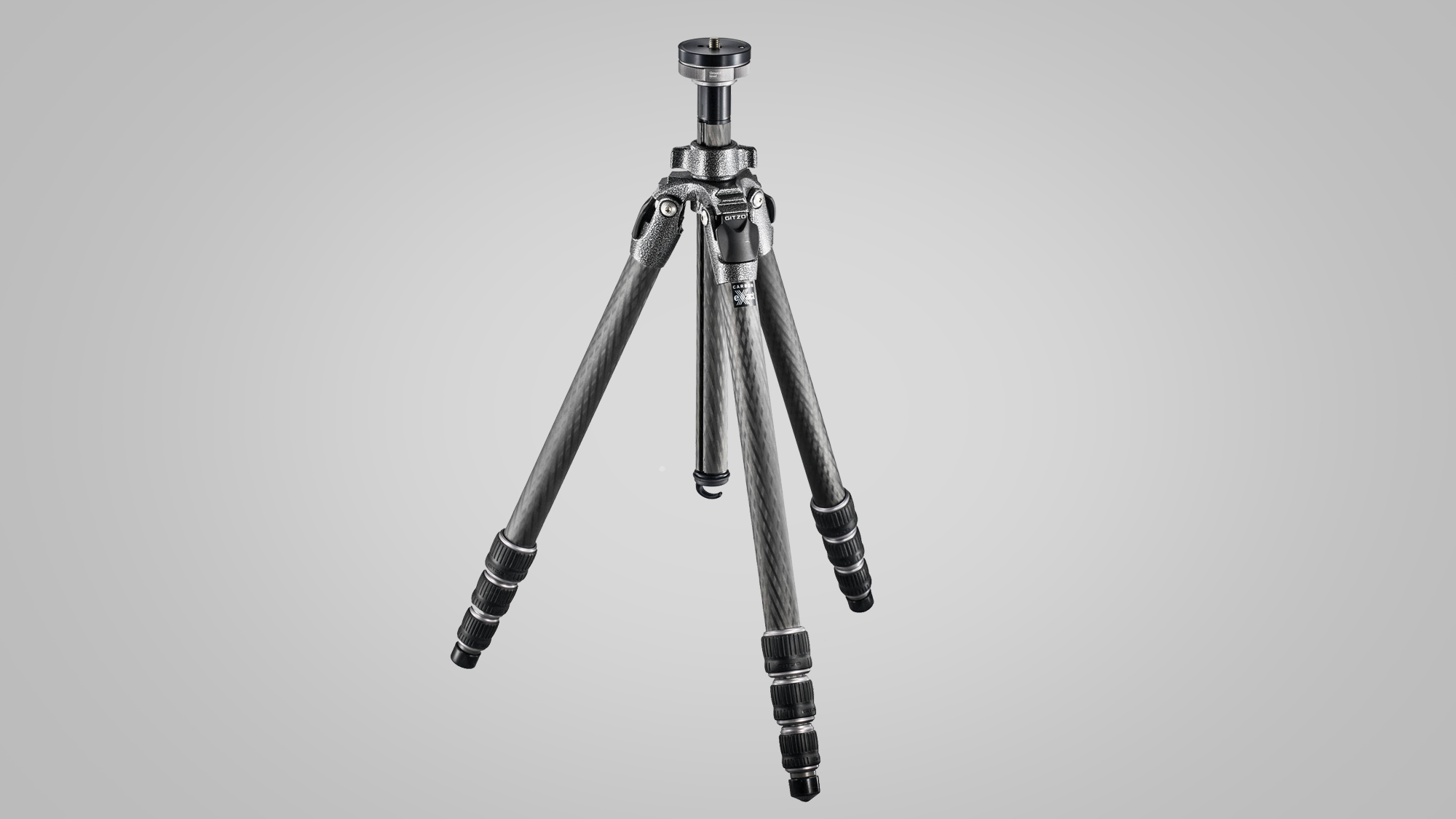
4. Gitzo GT2542 Mountaineer Series 2 + GH3382QD ball head
Specifications
Reasons to buy
Reasons to avoid
Gitzo has been one of the most highly regarded tripod manufacturers for around 80 years, teaming up in more recent times with Manfrotto (another tripod legend) as part of the Vitec group. Typical of Gitzo carbon fibre tripods, the current range is eye-wateringly expensive compared with most other makes. It’s split into Traveler, Mountaineer, and Systematic product lines.
The Mountaineer is the best fit for general use, with Series 0, 1, 2, and 3 legs having progressively greater load ratings. The Series 2 edition has an 18kg rating which should be more than enough for pretty much any stills camera outfit, and it’s also highly resistant to flexing and vibrations.
The 4-section legs and GH3382QD ball head are available separately and also as a complete kit. In some regions, the complete kit comes with a welcome discount, considering the high price of the separate components. Simple yet stylish, the ball head has an adjustable friction damper built into the main locking knob, plus a pan-only release.
One particularly useful feature of the Gitzo Mountaineer is that you can quickly and easily remove the centre column entirely and plug its short stub directly into the spider. This makes for speedy conversion for ultra-low-level shooting.


5. Benro MeFOTO RoadTrip PRO Carbon Fiber Series 1
Specifications
Reasons to buy
Reasons to avoid
This 6-in-1 carbon fiber tripod is designed for multimedia content creatives who need maximum versatility in their equipment. Aimed to lighten the load, the MeFoto RoadTrip PRO Series 1 can be used not only as a tripod but also as a monopod, boom pole, selfie stick, high hat, and tabletop tripod.
The two-section center column can be extended alongside five-leg sections to reach up to 152.5cm in height, making it almost four times taller than its folded height. It’s limited to just an 8kg payload which makes sense as too much weight when combined with all those leg and column joints could make things a little unsteady if going any heavier. Fortunately, there’s an additional center column hook that fits underneath to hold a camera bag or similar for some additional weight and grounding.
The true magic of this tripod is its hidden features. The feet unscrew to reveal a 3/8 inch to 1/4 inch adapter stud, plus a screwdriver to remove said stud. You can use it on the removable tripod leg to hold the footplate when it doubles as a phone holder. There’s also a hidden allen key in the third foot to help tighten the bolts on the tripod itself. A small leg set unscrews from the center column to be used as a foot stand for its monopod ability, or as a table-top tripod for the ball head.

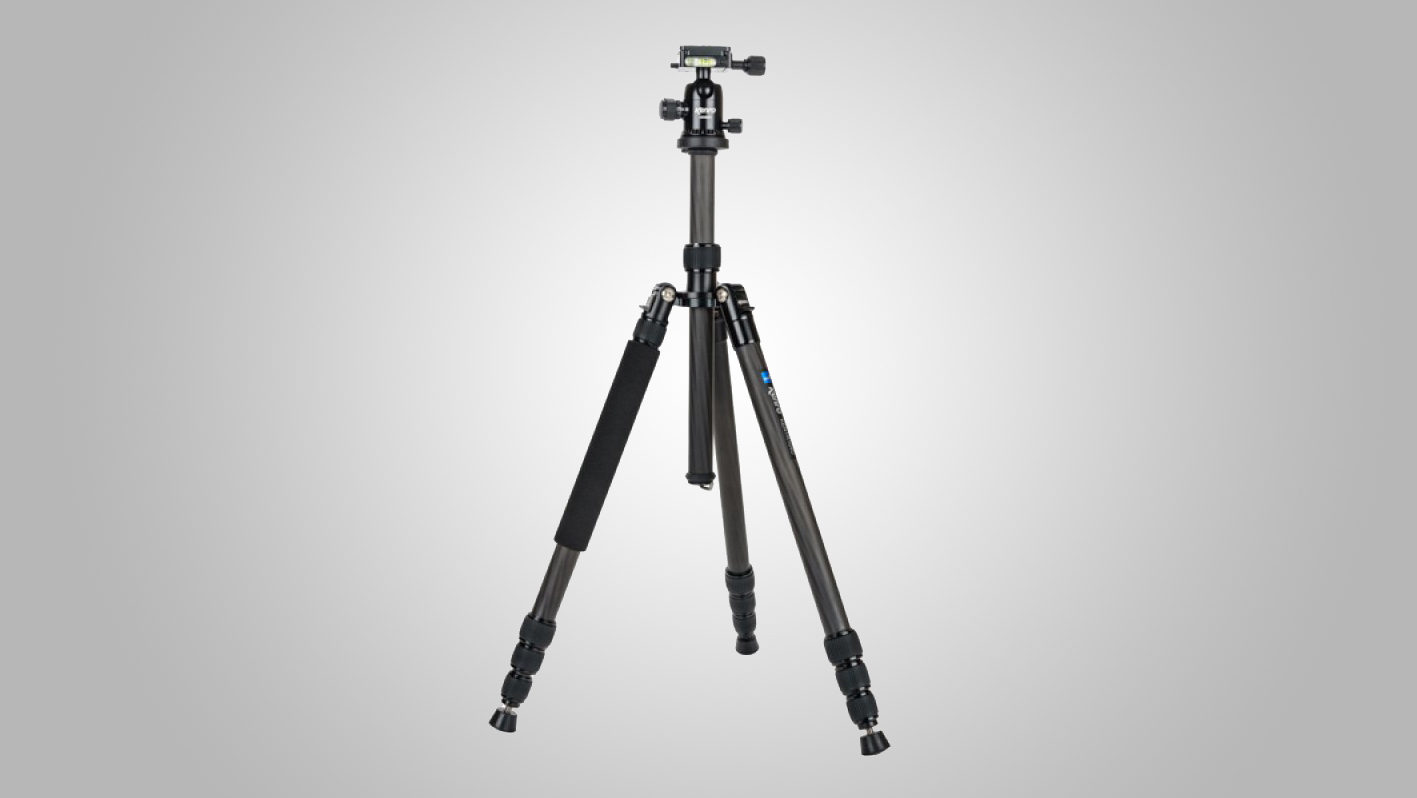
6. Kenro Karoo Travel Tripod Kit 104C
Specifications
Reasons to buy
Reasons to avoid
With carbon fibre legs, the option of rubber and spiked feet, the possibility to use one of its legs as a monopod, and a carry bag thrown in too, this compact travel tripod kit certainly ticks many boxes – particularly at this price.
Sure, its 8kg payload isn’t as generous as some of the other options here, although this is still more than sufficient for the majority of camera and lens setups. Similarly, other options fold down smaller, but not to the extent to make that a deal-breaker.
Look a little deeper and you see it’s full of useful touches. For example, you get two centre columns, the smaller of which means it can be adapted easily for low-level shooting, with three separate leg angles available for you to position it precisely. It’s also been designed with a hook on the underside to allow you to hang a bag for greater stability.
This would also be a fitting option for anyone needing to shoot over crowds, thanks to the monopod’s lofty 173.5cm maximum height. Its lengthy six-year warranty should give you extra peace of mind, however, you plan on using it.

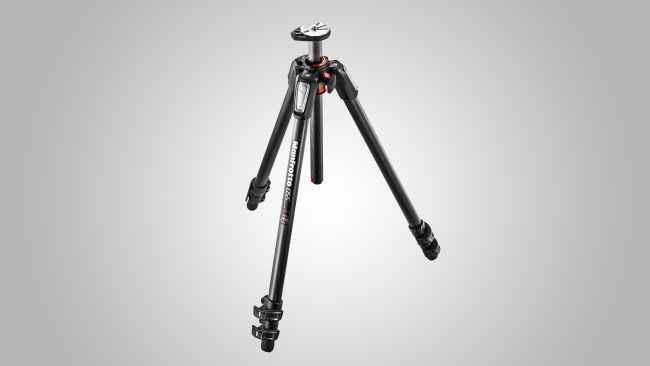
7. Manfrotto MT055CXPRO3 + XPRO ball head
Specifications
Reasons to buy
Reasons to avoid
Sold separately as a set of carbon fiber legs and a magnesium alloy ball head with a quick-release plate, the MT055CXPRO3 + XPRO ball head really is a winning combination from Manfrotto.
Upgrades in this latest edition of the longstanding and highly popular 055 series include easy-action ‘Quick Power Lock’ levers for the leg sections, which operate with speedy simplicity. However, in the aluminum version of the 055XPRO3 legs, which costs about half the price, the leg sections drop out a little too freely for our liking, when the clamps are released.
The mechanism for locking each leg at any of four available angles is quick and intuitive, as is the 90-degree pivot system for the center column, which enables you to use it as a horizontal boom.
The ball head is an absolute joy (sold separately), complementing the rock-solid performance of the legs and combining equally high-end build quality with smart features that include an independent friction adjuster, pan-only release, and bubble levels.

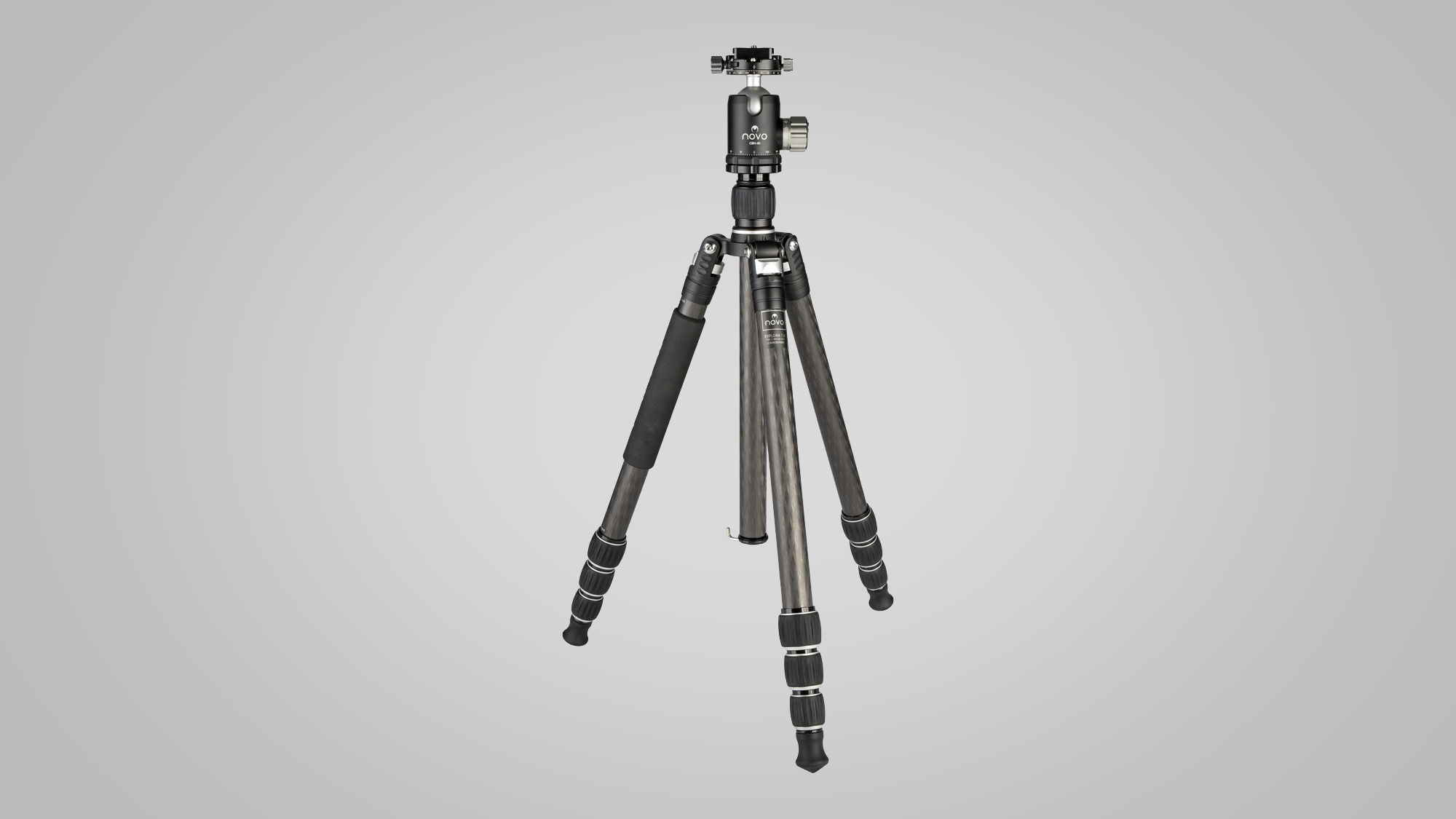
8. Novo Explora T20 Tripod Kit
Specifications
Reasons to buy
Reasons to avoid
Thanks to a design feature that’s common in travel tripods, the T20 kit stands tall with a maximum operating height of 188cm, yet folds down to just 53cm. That’s thanks to the legs swinging up and the feet closing around the ball head with the centre column extended. The flip side is that it takes a little longer than usual to set up the tripod and fold it down again.
The Novo is available as a complete kit, as well as separate legs and ball head. The two components are perfectly matched, however, with similarly excellent build quality and a real flourish to the design. Twist clamps on the four-section legs only require a minimum of rotation for loosening and tightening. A low-angle adapter is supplied for use instead of the centre column for ultra-low-level shooting. The tripod leg that features comfort padding is also removable and connects with the detached centre column to act as a monopod.
Down below, the feet are sturdy metal spikes with rubber pads that push over the top. Getting back to the head, there’s a neat adjustable friction damper built into the main locking knob, and two separate pan-only release mechanisms, one for the entire ball head and the other that releases only the camera platform. The platform also includes a bubble level, though this is obscured when fitting the Arca-Swiss type quick-release plate. That's a small downside on an otherwise great carbon fiber tripod.

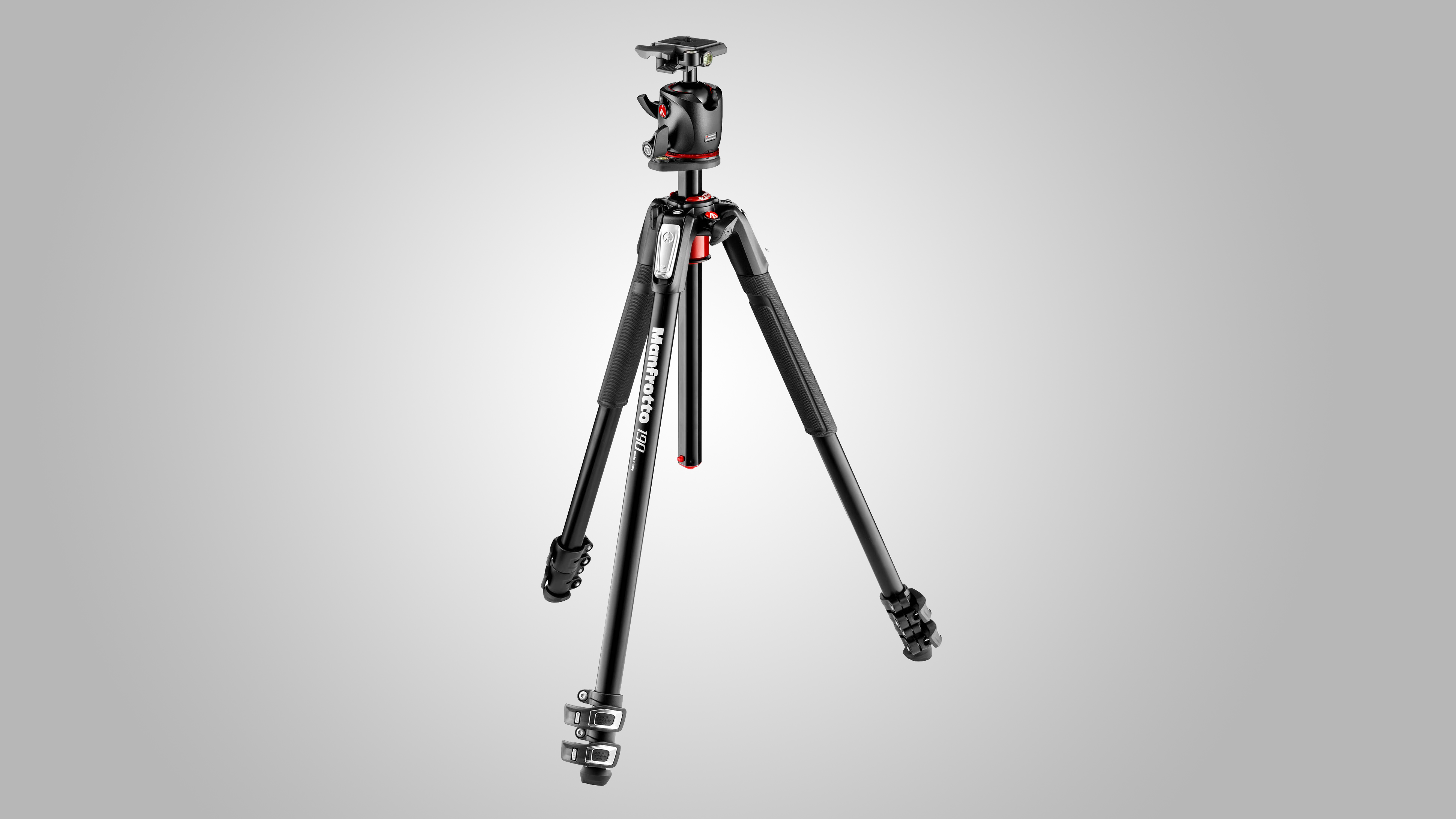
9. Manfrotto MK190XPRO3-BHQ
Specifications
Reasons to buy
Reasons to avoid
The latest in a long line of much-loved Manfrotto 190 tripods has been revamped for greater ease of use and compactness. There’s a wide range of three-section and four-section 190-series models to choose from, in both aluminum and carbon fiber, with and without supplied heads.
This complete three-section aluminum kit with an XPRO ball head can’t compete with most ‘travel tripods’ for folding down to a small size, as the legs don’t swing upwards for stowage. However, the set-up is quicker and the folded height is 7cm shorter than that of its predecessor, mostly thanks to a redesigned pivot joint. This enables the center column to be rotated vertically through 90 degrees for use as a horizontal boom.
The multi-angle leg mechanism is similarly streamlined and straightforward, enabling four lockable angles rather than the usual three. Up on top, the kit includes the latest XPRO ball head, which is simply superb and, unlike in most previous Manfrotto designs, includes an independent panning release. The level of build quality is up to Manfrotto’s usual high standards, and the Manfrotto MK190XPRO3-BHQ is a good compromise between rigidity and lightweight compactness, at a competitive price.


10. Vanguard ALTA PRO 2+ 263CB 100 Carbon Fiber Tripod with Ball Head
Specifications
Reasons to buy
Reasons to avoid
Setting up a tripod for a landscape shoot is one thing, but then using that same tripod for macro photography can be a bit of a pain. The legs often get in the way of foliage and it’s hard to get the camera to reach in towards the subject – especially when on location.
Fortunately, the ALTA PRO 2+ 263CB has a multi-angled center column that can be adjusted and used horizontally to allow the camera to reach directly into the scene. Perfect for bug photographers especially, when getting in close on a subject in a bush or amongst foliage is a tall order. However, this unique feature isn’t to everyone’s taste (or requirements) and it does mean there’s a 7kg payload limit, so larger camera/lens combinations are ruled out straight away.
Each touch-point (such as the pan-locking lever and leg-angle levers) has texturized rubber grips for easy use in cold or wet conditions. As is expected with tripods of this caliber it has a rubberized leg for holding in extreme temperatures and the ball head, while slight, holds rock-solid when fastened. Another feature we really like about this tripod is that the leg locks only take a quarter turn to lock into place, making it fast to set up and break down.

What type of head?
Every tripod needs a head, and the smart money is on ball heads. Many tripods are sold as kits, comprising legs and a head, although sometimes you’ll need to buy the legs and heads separately; you don’t have to stick with the same manufacturer for both items, but there are a couple of things to bear in mind if you want to mix and match.
The attachment screw on the tripod platform can be 1/4-inch or a larger 3/8-inch in size. You can fit a head with a larger thread to a tripod with a smaller screw, using an adaptor, but you can’t couple a head with a 1/4-inch thread to a tripod with a 3/8-inch screw.
It’s also good to check that the diameter of the ball head’s mounting plate is roughly the same size as the mounting platform on the tripod – the diameters tend to range from around 45mm to 60mm. And finally, it makes sense to get legs and a head that have a similar maximum load rating.

The main plus point of a ball head, compared with a traditional three-way photographic head, is that they’re much quicker and easier to set up. A single locking screw is all that’s needed to enable a full range of movement, and there are no locking arms sticking out that need to be removed for stowing the tripod away.
Drawbacks of conventional ball heads have also been addressed in many of the latest designs. For example, it’s common to find an adjustable friction damper as well as the main locking screw, so that you can tailor operation to suit your camera when fitted with lenses of wide-ranging weights. An additional pan-only release is also often fitted, so you can keep a ball head locked in position but still pan the camera to track action or to take a sequence of shots for stitching into a panoramic image.
Low-level shooting
Moving on down, the joints at which the three legs are joined to the main chassis typically feature mechanisms with which you can lock the legs at three or more different angles. This enables low-level shooting without the need to remove and invert the center column, saving time and effort, and avoiding the need to shoot with the camera upside down. Splaying the legs further apart also adds stability in low-level shooting, and it can also be useful to use different legs at different angles on uneven terrain.
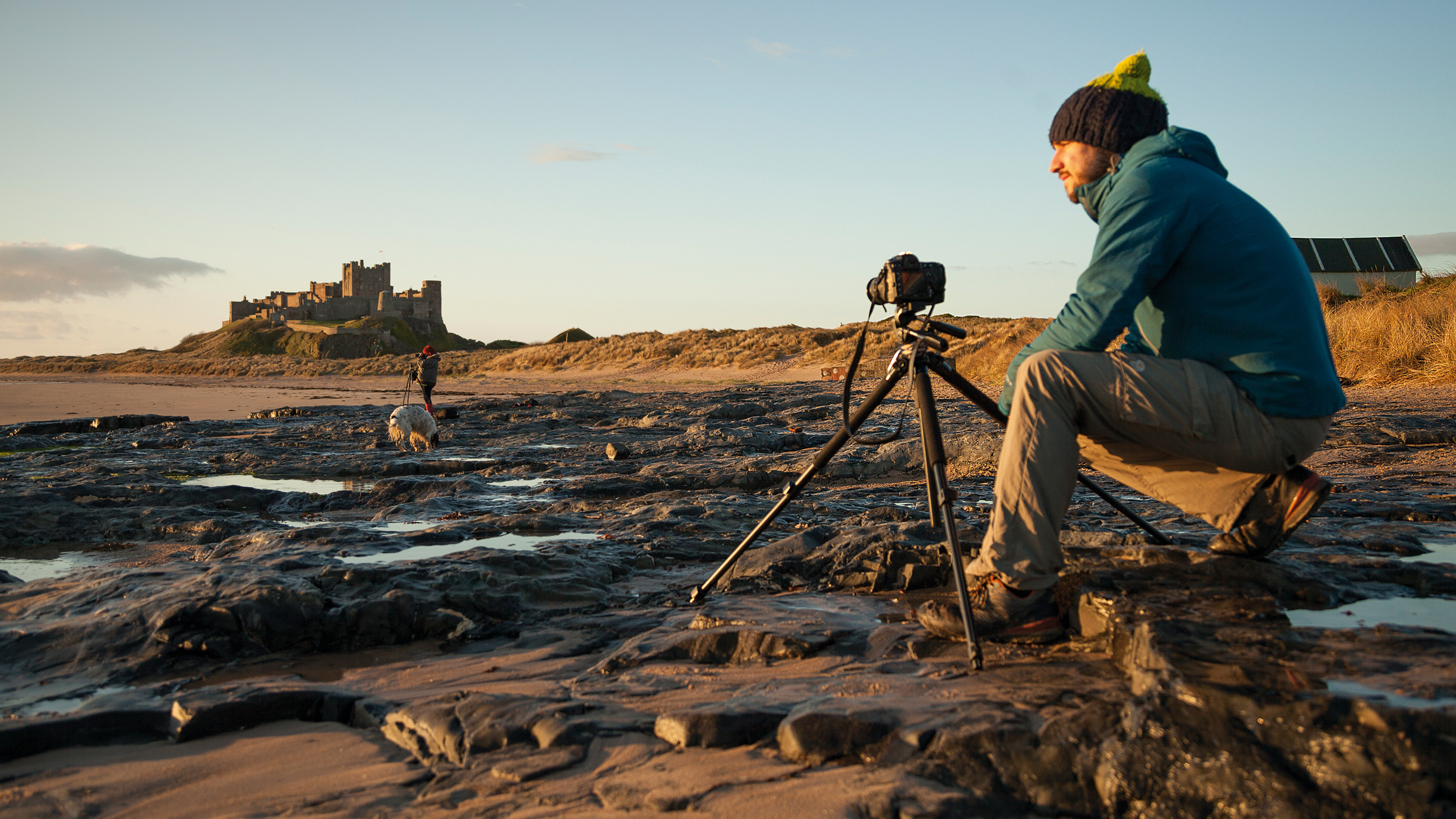
Another innovative feature often used in recent designs is a pivoting center column. With many tripods, you can pivot the center column through 90 degrees and use it as a horizontal boom. It’s great for shooting extreme close-ups with a macro lens and helps to avoid the tripod feet sneaking into the picture if you're shooting with an ultra-wide-angle lens.
Three leg sections gives a good compromise between maximum operating height and minimum folded height
It’s also useful in conjunction with multi-angle leg locks for very low-level shooting. The pivot design in some tripods goes further still, enabling the center column to be locked at many angles in small increments through a complete 180-degree arc, instead of just in vertical or horizontal orientation.
The leg sections themselves are usually three in number. This gives a good compromise between maximum operating height and minimum folded height, as well as ensuring that the bottom sections aren’t too thin and spindly. However, ‘travel tripods’ often feature four or even five sections, so that they can fold down smaller – this can impair rigidity when you need to use the thinnest, lower leg sections, and set-up can take longer if you need to release and re-lock up to 12 separate clamps, for example, for tripods with five-section legs.

The section clamps themselves tend to be either twist-action or locking levers. Some people find twist clamps quicker and easier to operate when the legs are folded down, while others find locking levers more convenient. Locking levers became all the rage a few years ago, but twist-locks have been making a comeback.
Another space-saving idea that’s featured in an increasing number of travel-friendly tripods is that the legs swing upwards for stowage, with the head nestling between the feet. Set-up can take a little longer, but it typically knocks about 20cm off the folded height.
Down at the bottom, there are two types of feet generally on offer. Rubber pads work best on smooth, hard surfaces, whereas metal spikes are better on the carpet and loose ground. Some tripods come with interchangeable feet to suit every occasion, while others might feature rubber pads with retractable spikes.
Aluminum or carbon?
A material consideration is whether to go for aluminum or carbon fiber. Both are capable of providing very sturdy support but carbon fiber tripod kits (with the same heads attached) are typically about 15% lighter in weight than aluminum versions of the same kit. Naturally, the bigger the tripod, the greater the weight-saving, but it generally works out to around 500g.
Carbon legs look smart and have more of a feel-good factor, but are more susceptible to shattering if they suffer a sharp knock. And where carbon and aluminum versions of the same legs are available, the carbon edition can sometimes be as much as twice the price.
- Best camera accessories: essential bits of kit for your camera
- 10 must-have accessories for every Canon DSLR owner
- 10 must-have accessories for every Nikon DSLR owner
- Best travel tripod: 5 carbon fiber stands for your camera
- Best camera bag: 10 options to protect your camera kit
- Best flashgun: dedicated strobes for Canon and Nikon DSLRs
- Best ND filters: 6 top models tested
- Best ND grad filters: 6 top models tested
Sign up for breaking news, reviews, opinion, top tech deals, and more.